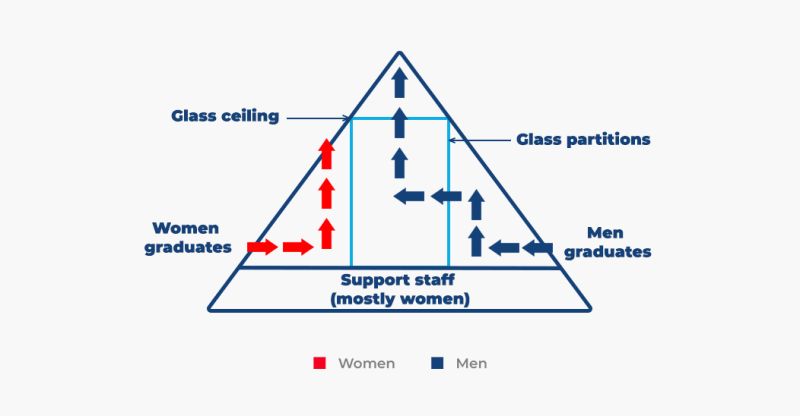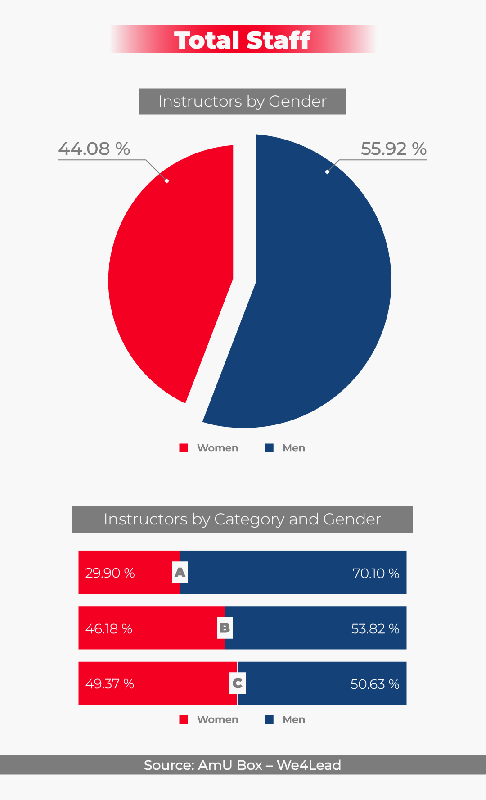ADD THESE DATES TO YOUR E-DIARY OR GOOGLE CALENDAR
This site is part of the Siconnects Division of Sciinov Group
This site is operated by a business or businesses owned by Sciinov Group and all copyright resides with them.
ADD THESE DATES TO YOUR E-DIARY OR GOOGLE CALENDAR
July 27, 2025
Two years after its launch, the Euro-Mediterranean WE4LEAD project has achieved tangible progress in promoting gender equality in higher education. By collecting gender-disaggregated data, establishing gender equality units, implementing anti-harassment measures, and providing leadership training, this Erasmus+ program has deeply engaged its nine partner universities. Together, they are paving the way for meaningful cultural and institutional transformation.
Two Years After Its Launch in 2023, Where Does the Euro-Mediterranean Project Women’s Empowerment for Leadership and Equity in Higher Education Institutions (WE4LEAD) Stand?
The project’s mission is to increase the representation of women in key academic leadership roles by transforming institutional practices and fostering a genuine culture of gender equality.
“This is not just another gender equality project but an initiative offering tangible actions,” stresses Isabelle Régner, WE4LEAD coordinator at Aix-Marseille University, in a presentation video on the project’s official website.
Led by the TETHYS consortium, coordinated by Aix-Marseille University and co-managed by the Lebanese University (LU), WE4LEAD unites nine higher education institutions, including universities from Lebanon (Antonine), Tunisia (Tunis El Manar and Sousse), Algeria (Constantine 1 and 3), Spain (Autonomous University of Madrid), and Italy (Sapienza).*
In 2024, This is Beirut interviewed key stakeholders to highlight the project’s approach, timeline, and task allocation. We now revisit the initiative to track progress, uncover challenges, and share results.
Measuring Inequality: Insights from Gender-Disaggregated Data
“Women face double discrimination in the labor market: horizontal segregation, being concentrated in certain sectors, and vertical segregation, struggling to access leadership roles,” explains Huguette Abou Mrad, WE4LEAD coordinator at Antonine University (AU). “The glass ceiling limits their advancement to key positions.”
This figure shows how male and female graduates advance in their careers within the same academic setting.
“The crucial starting point was establishing a clear baseline for women’s representation in university leadership,” explains Sélim Mekdessi, WE4LEAD coordinator at LU.
Key gender equality metrics—such as staffing distribution, pay gaps, international mobility, and representation in top leadership roles (glass ceiling index)—were measured across all partner institutions.
The data highlights a consistent underrepresentation of women among university staff, especially in Category A, the highest and most prestigious academic rank.
Salary gaps are driven more by unequal access to bonuses and leadership positions than by differences in base pay. Contributing factors include biased recruitment and promotion practices, along with women’s lower participation in international mobility programs—often impacted by family responsibilities that hinder their academic progression..png)
To tackle these challenges, a gender data manual and specialized training programs were developed to support universities in systematically collecting and analyzing gender-related data as part of an ongoing improvement process.
This tool establishes a clear baseline and allows institutions to monitor progress throughout and beyond the project. Quantifying gender inequalities also helps confront denial or a lack of awareness within academic settings.
Raising Awareness, Building Capacity, and Fostering Change
To address implicit gender biases affecting evaluation, hiring, and promotion processes, tailored training modules were introduced. Delivered through guides and interactive workshops, these modules offer practical tools—such as diagnostic tests, videos, presentations, and explanatory materials—available in both French and English.
A landmark achievement: “For the first time in our university’s history, we have a female vice-president!” announces Boutheina Ben Hassine, WE4LEAD coordinator at the University of Sousse. “To break down gender stereotypes and support women’s pathways into academic leadership, we’ve launched two training tracks adapted to Tunisia’s social context,” she explains.
The first track targets implicit gender bias in recruitment and promotion processes, training 40 women and 10 men from academic and administrative staff.
The second track focuses on leadership and mentoring, supporting female academics—including PhD students, postdoctoral researchers, and lecturers—through mentoring by both male and female experts. It helps participants prepare for habilitation à diriger des recherches (HDR) applications and the publication of academic articles.
“This program also includes a proactive recruitment component, encouraging women to apply for leadership roles such as department heads, members of scientific councils, deans, and university presidents,” says Ben Hassine.
At LU, awareness campaigns are directed at academic and administrative leaders, selection committees, faculty, and students, Mekdessi adds. “These discussions have opened essential dialogues on unconscious bias, implicit evaluation criteria, and the often-unseen barriers that can hinder women’s career progression.”
At AU, numerous initiatives have been introduced to promote gender equality. “We’ve launched annual awareness campaigns, training programs, and mentoring support for women,” explains Abou Mrad. She emphasizes that such efforts are crucial and must be sustained. “Inclusive policies only succeed with thoughtful, committed engagement from everyone,” she adds.
Anti-Harassment Units: Creating Safer Academic Spaces
“Violence against women persists across both public and private domains,” says Halima Ouanada, WE4LEAD coordinator at the University of Tunis El Manar. In response, anti-harassment units were developed, focusing on three key areas: raising awareness among the university community about sexist and sexual violence; training administrative staff to identify, prevent, and respond to such issues; and providing survivors with confidential and compassionate support.
This initiative is informed by two surveys conducted with university leadership, faculty, and students from partner institutions. A project guide offers a comprehensive checklist for establishing effective anti-harassment units, along with best practices drawn from successful models at other universities.
Gender Equality Units: Catalysts for Institutional Change
To turn commitments into real policies, universities are guided by an 11-step framework for creating and operating gender equality units. This begins with a formal institutional commitment and culminates in evaluating the impact of implemented strategies.
The first step is appointing a representative team with a clear mandate and measurable goals. The team then conducts a gender audit—gathering both quantitative and qualitative data—to inform the development of a Gender Equality Action Plan (GEAP).
“A GEAP is a strategic tool structured around four stages: diagnosis, planning, implementation, and evaluation,” explains Clelia Rossi Arnaud, professor at Sapienza University of Rome. She highlights the importance of a strong diagnostic phase grounded in gender-disaggregated data to identify key inequalities. “Planning then focuses on setting goals and defining targeted actions. After implementation, regular monitoring and evaluation are critical,” she says. “Evaluation isn’t the end—it's a foundation for the next cycle, feeding back into updated diagnostics and future plans.”
The guide also recommends that gender equality units work closely with university leadership, promote institution-wide awareness, coordinate initiatives, and track outcomes. For long-term sustainability, it advises embedding the units within administrative structures, allocating dedicated budgets, and providing ongoing training to counter staff turnover.
At AU, Abou Mrad confirms that the necessary resources have been committed to implement GEAPs. The university has taken concrete steps to institutionalize gender equality, including revising recruitment and promotion policies and incorporating gender perspectives into curricula through language programs, civic education, and MOOCs.
Building Collective, Lasting Impact
WE4LEAD goes far beyond skills development. As Mekdessi explains, “It’s built on collaboration and mutual learning—each partner university contributes its experiences, challenges, and innovative solutions.”
Although initially formed by nine institutions, the project’s ambitions extend well beyond. WE4LEAD aims to inspire other universities and organizations—both public and private—to adopt its transformative practices and help ensure lasting impact.
A key ally in this mission is RESUFF (Francophone Network of Women Leaders in Higher Education and Research). Under the leadership of Leila Saadé, RESUFF fosters institutional collaboration, shares best practices, and supports continuity beyond the project’s formal timeline. One example is the March 2025 webinar during Women’s Month, which celebrated key milestones and extended the dialogue to other Francophone academic institutions.
The progress is already visible. “We're seeing real changes,” says Mekdessi. “Awareness is growing—even among top decision-makers. People are more willing to acknowledge and challenge inequalities. Most importantly, there’s a deepening recognition that gender equality isn’t just a matter of goodwill—it’s about justice, and it’s essential for performance, credibility, and modernization.”